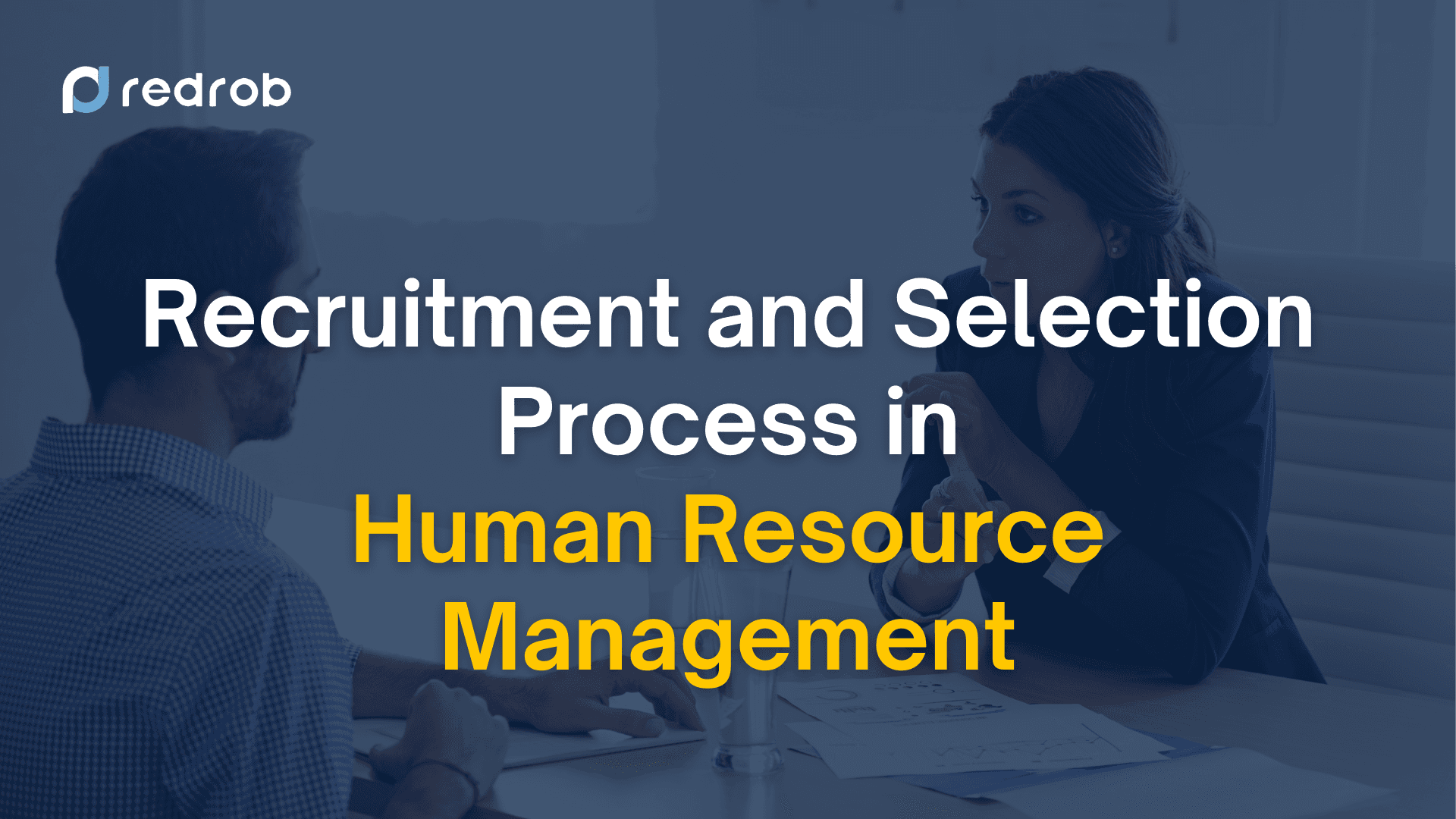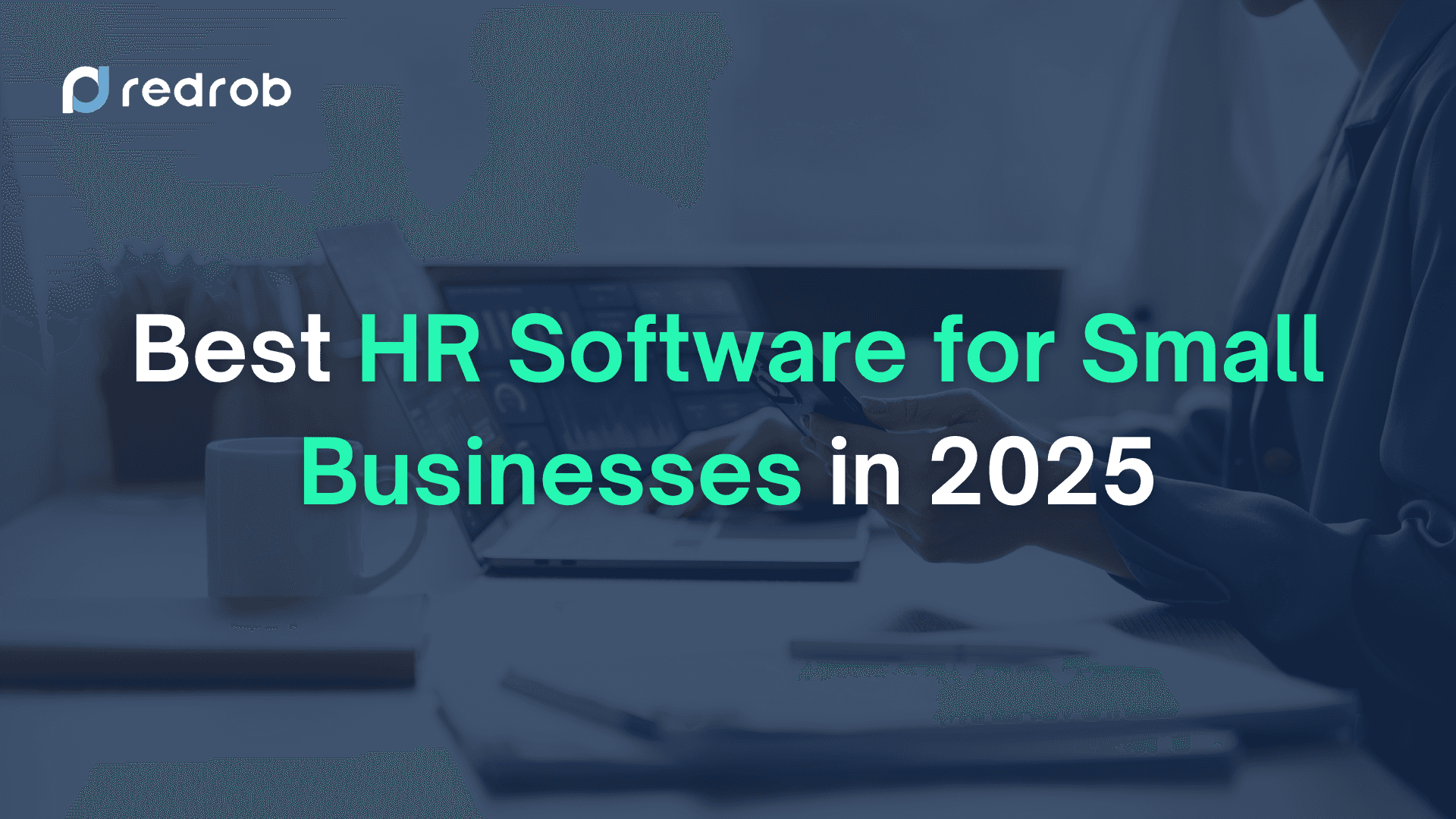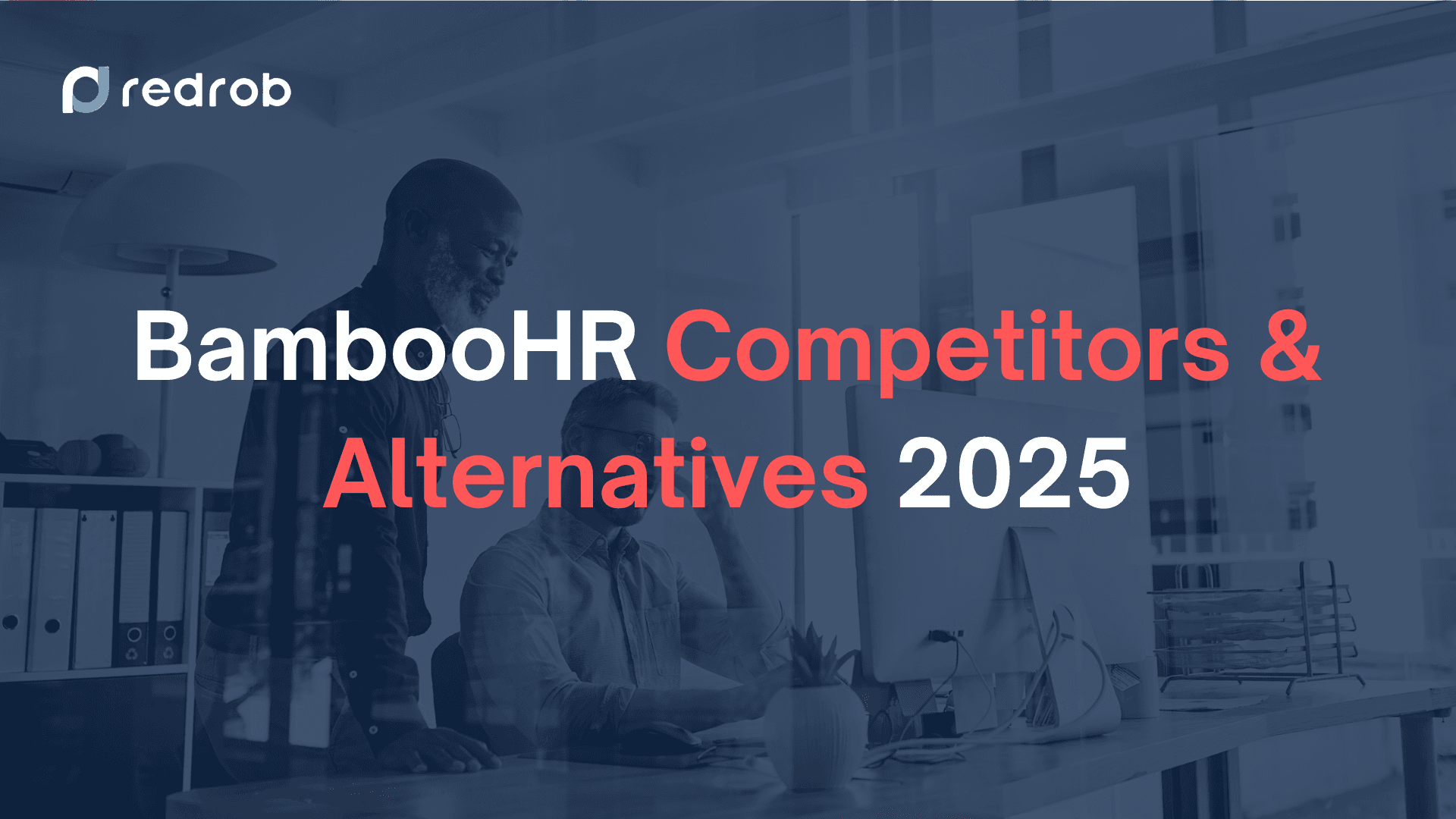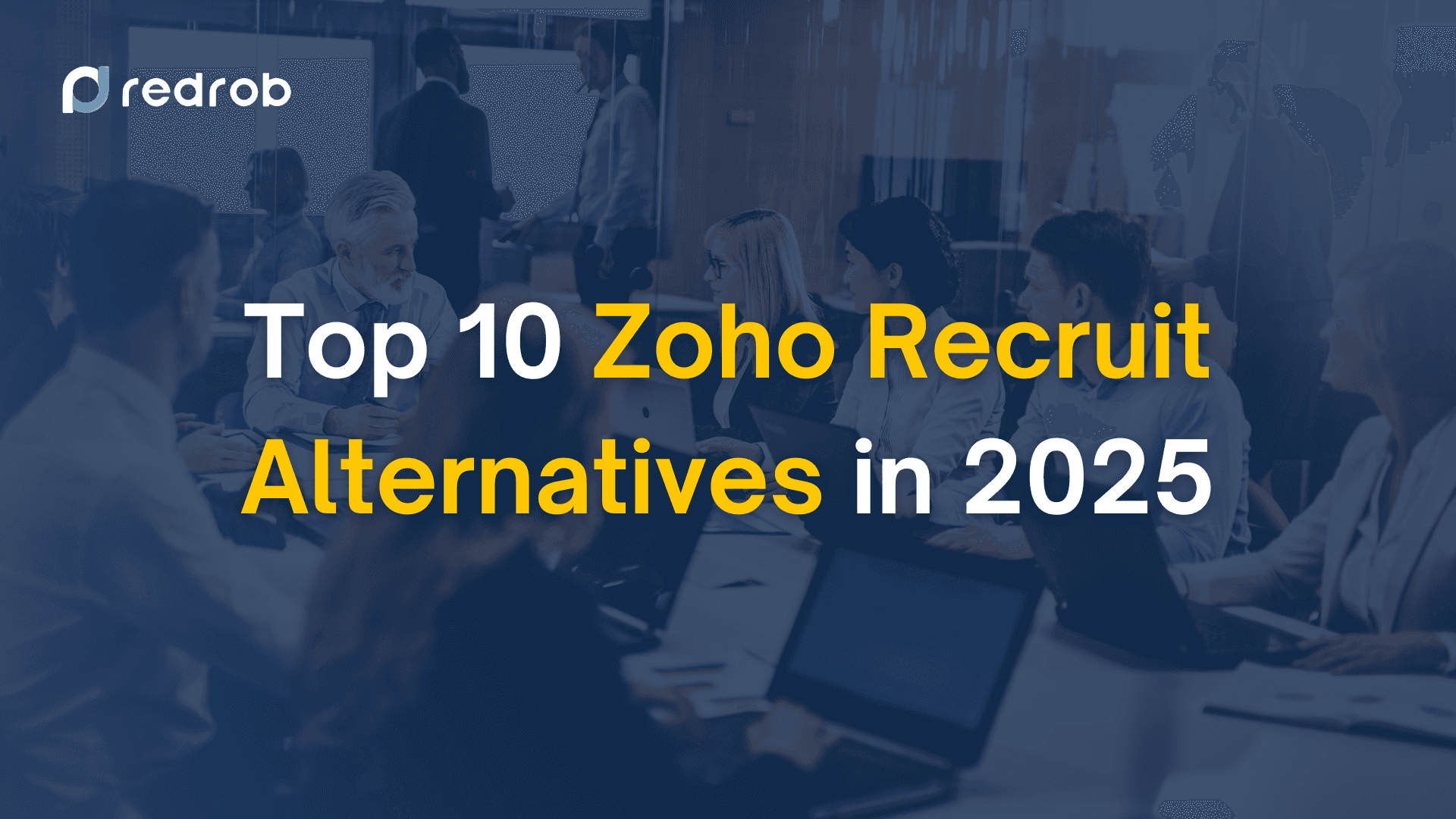Human Resource Management
10 min read
•
Oct 21, 2024

Soumyata Singh
The recruitment process in HRM plays a crucial role in your organization’s success. As we say, finding the right talent is not just about filling a position; it’s about driving your company forward. But with hundreds and thousands of candidates- all with comptant skill sets and experience, hiring is more complex than ever. With a structured recruitment and selection process, you can attract top candidates and build a strong team.
You need the right strategies, tools, and innovations to stay ahead. In this blog, we take you through the entire recruitment cycle, explore the latest trends, and show you how to align it with your business goals. Ready to improve your recruitment process? Let’s get started!
Introduction to Recruitment and Selection in HRM
Recruitment and selection are critical functions of Human Resource Management (HRM). The recruitment process in HRM refers to the steps you take to attract, screen, and select candidates. It’s important to ensure that the right people fill the right roles. This process helps organizations build strong teams and achieve their goals.
The primary objectives of recruitment and selection are to:
Attract qualified candidates who possess the necessary skills and experience to meet the organization's needs.
Select the most suitable candidates for available positions based on their qualifications, competencies, and cultural fit.
Ensure that the recruitment and selection process is fair, transparent, and compliant with all relevant laws and regulations.
Role in organizational success
Effective recruitment and selection processes are essential for organizational success for several reasons:
Talent acquisition: A well-executed recruitment process helps organizations attract and hire top talent, which can lead to increased productivity, innovation, and competitive advantage.
Employee retention: Selecting the right candidates who are a good cultural fit can improve employee satisfaction and reduce turnover rates.
Organizational culture: The recruitment and selection process plays a vital role in shaping an organization's culture by attracting individuals who share its values and mission.
Business growth: A strong and talented workforce is essential for organizations to achieve their strategic goals and sustain long-term growth.
Recruitment Process: An Overview
The recruitment process in HRM begins long before you post a job ad. It involves a structured approach to filling a vacancy. By identifying the need, analyzing the job, and choosing between internal or external recruitment, you ensure a complete, all-round recruitment strategy.
Identifying the Need for Recruitment
You first need to identify when it’s necessary to hire. This can result from business growth, an employee leaving, or a new project starting. The key is to ensure you only recruit when it truly benefits the organization. For instance, if your team is stretched thin, it’s time to bring in new talent. Companies that delay recruitment often witness a notable productivity drop, which shows how important timely hiring is.
Job Analysis and Specification
Once you know recruitment is needed, you must analyze the job. Job analysis involves understanding the role, its tasks, and required skills. From this, you create a job specification. This document clearly defines the qualifications and experience you’re looking for. A detailed job specification helps attract the right candidates and speeds up the recruitment process in HRM. For example, a clear job description sets clear expectations, reducing unqualified applicants, saving time in the long run.
Internal vs. External Recruitment
Next, you decide between internal or external recruitment. Internal recruitment promotes current employees, boosting morale and reducing costs. It’s a quicker option but limits your candidate pool. External recruitment brings fresh perspectives from outside the company. However, it’s often costlier and takes more time. Both methods have their strengths, so you should choose based on the specific needs of your recruitment process in HRM.
Recruitment Techniques and Strategies
Choosing the right recruitment techniques is essential for finding top talent. The recruitment process in HRM can use various methods, from traditional to digital strategies. Each has its strengths, and the key is knowing which to apply for your specific needs.
Traditional Recruitment Methods
Traditional methods have been around for decades and are still useful today. These techniques include:
Newspaper ads: They help you reach a broad audience, especially for local roles.
Job fairs: Meeting candidates face-to-face builds connections quickly.
Recruitment agencies: Agencies can help you find specialized candidates faster.
While effective, traditional methods tend to be costly and slower compared to digital approaches. For example, using a recruitment agency could cost up to 20% of the hired candidate’s annual salary.
Digital and Social Media Recruitment
In recent years, digital recruitment has transformed how companies hire. You can reach a global audience through:
Job boards: Sites like Indeed or LinkedIn make it easy to post jobs and receive applications quickly. In fact, LinkedIn claims that it can help reduce hiring time by up to 130 hours per hire.
Social media platforms: LinkedIn, Facebook, and Twitter allow you to engage with potential candidates more personally. LinkedIn, for example, is one of the top choices for recruiters to find talent.
Company websites: A dedicated career page allows you to present your employer brand while collecting applications.
Using digital tools speeds up the recruitment process in HRM and can help you target passive candidates who aren’t actively job-hunting.
Outsourcing Recruitment Services
Sometimes, outsourcing your recruitment can be the best option. It’s ideal when your internal HR team lacks time or resources. Outsourcing services include:
Recruitment process outsourcing (RPO): RPO providers manage all or part of your recruitment efforts, helping you scale during busy periods.
Headhunters: These specialists focus on finding candidates for high-level positions. They typically have access to niche networks.
Outsourcing can save time and ensure a more efficient recruitment process in HRM, although it may increase costs.
These recruitment strategies help you hire the right people more efficiently. Up next, let’s tackle the challenges you might face in your recruitment process.
Common Challenges in the Recruitment Process
Recruiting the right people may not be the easiest of things on your list. The recruitment process in HRM comes with a set of challenges that you must address to attract the right talent. These range from finding qualified candidates to managing your company’s image and navigating legal and ethical concerns.
Attracting Qualified Candidates
Attracting top talent is often the biggest challenge in recruitment. With more job opportunities available, candidates have a wider selection. You may find that the talent pool is too small or that you're competing with larger companies offering better benefits. According to a survey, 77% of hiring managers struggle to find candidates with the right skills. To overcome this, you can refine your job descriptions and expand your recruitment channels to reach a broader audience.
Managing Employer Branding
Your employer brand plays a crucial role in attracting candidates. How potential employees perceive your company can make or break their decision to apply. Managing this image requires consistent communication and a positive work environment. Companies with strong employer brands attract 2X more qualified applicants. Therefore, investing in your brand is essential for streamlining the recruitment process. Tools like Glassdoor and LinkedIn allow you to actively reform your company’s image for prospective employees.
Legal and Ethical Considerations in Recruitment
Recruitment also involves various legal and ethical responsibilities. You must comply with labor laws, ensure fairness, and avoid discrimination. Failure to do so can lead to lawsuits or damage to your company’s reputation. It’s important to train your HR team on legal requirements to maintain a fair and ethical recruitment process in HRM.
Understanding these challenges prepares you to refine your recruitment strategies. Now, let’s talk about the techniques you can use during the selection process to find the best candidates.
Selection Process and Techniques
The selection process is a critical part of the recruitment process in HRM. Once you attract candidates, selecting the right one requires careful steps, including screening, interviews, and assessments. Each technique helps you identify the best fit for your organization.
Screening and Shortlisting Candidates
Screening is the first step in narrowing down applicants. You evaluate resumes based on job requirements to identify candidates who meet the criteria. Tools like applicant tracking systems (ATS) can simplify this process by filtering resumes based on keywords. Redrob’s comprehensive ATS can help you save 60% of candidate screening time. After screening, you create a shortlist of candidates who will move forward to the next stage.
Interview Types and Structures
Interviews are essential for assessing a candidate's fit for the role. There are different types of interviews you can use, depending on the job:
Structured interviews: You ask the same questions to all candidates, making it easier to compare responses.
Unstructured interviews: These are more conversational, allowing for flexibility in discussion.
Panel interviews: Multiple interviewers assess the candidate, providing varied perspectives. Interviews help you evaluate not just skills but also cultural fit, making them vital to the recruitment process in HRM.
Psychometric Testing and Assessments
Psychometric tests measure candidates' abilities, personality, and suitability for the job. These assessments include cognitive ability tests, personality questionnaires, and situational judgment tests. Most of the Fortune 500 companies use some form of psychometric testing during recruitment. These tools provide objective data to support your hiring decisions and improve the quality of hires.
By refining your selection techniques, you enhance the overall recruitment process. In the next section, let’s explore decision-making strategies to finalize your candidate choices effectively.
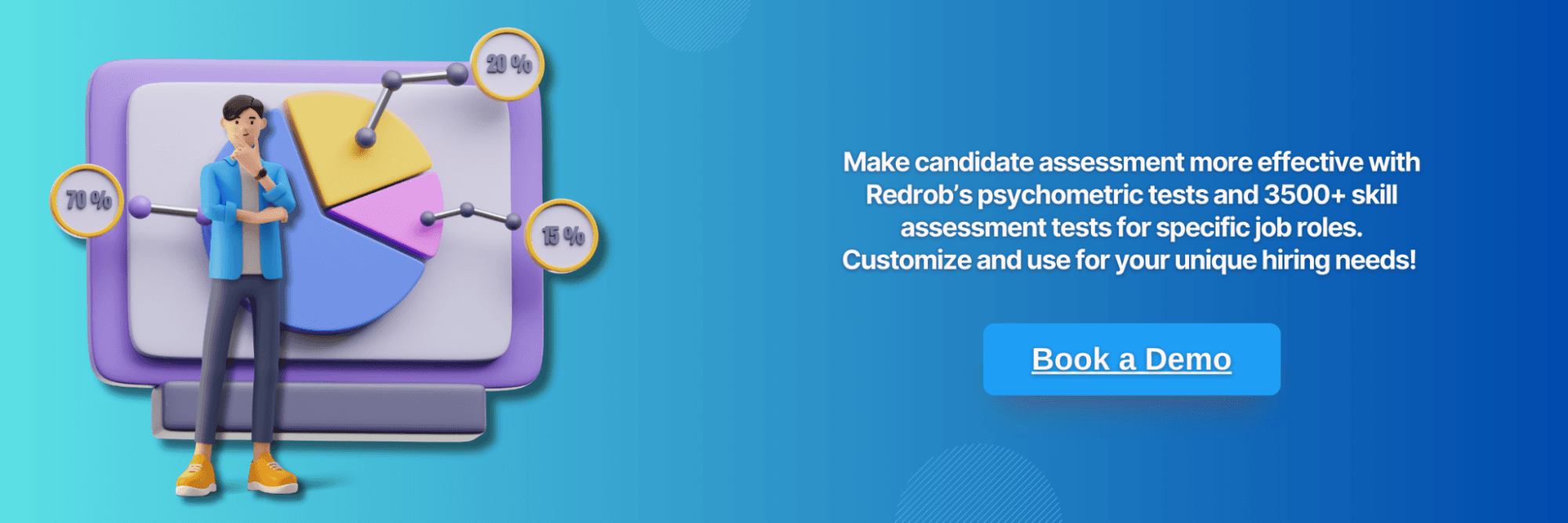
Decision-Making in the Selection Process
Once you've screened and interviewed candidates, the final decision-making step begins. This phase of the recruitment process in HRM involves verifying details, assessing overall fit, and selecting the ideal candidate.
Reference Checks and Background Verification
Before making an offer, it's important to verify a candidate’s background. Reference checks allow you to confirm past performance and work ethic. Background verification ensures that the information provided is accurate. Over 46% of employers report catching discrepancies during this stage, making it a critical step. Verifying a candidate’s education, employment history, and criminal record adds credibility to the hiring decision.
Evaluating Candidate Suitability
Evaluate candidates based on both their skills and cultural fit. You should weigh their performance in interviews, test results, and alignment with company values. Consider how the candidate will adapt to your team dynamics. A candidate’s past experience and potential for growth play key roles in their suitability.
Making the Final Selection Decision
The final decision involves comparing the top candidates. You’ll consider who best meets the job requirements and aligns with your company’s goals. Involving multiple decision-makers in this process can ensure a fair and unbiased choice. Studies show that companies with structured decision-making witness less hiring errors. Once you've made your selection, it’s time to extend an offer.
By carefully verifying and evaluating candidates, you improve your chances of making the right hire. Next, we will see how to structure and extend an offer to the chosen candidate.
Onboarding and Induction

When the selection is complete, the next step in the recruitment process is onboarding and induction. This process ensures new hires are welcomed and integrated smoothly into the organization.
Preparing the Employment Offer
The employment offer should be clear and comprehensive. It must outline job responsibilities, compensation, and benefits. Make sure all important details, like the start date and work hours, are included. Sending a well-crafted offer shows professionalism and helps set the right expectations. Most employees accept job offers that are clear and compelling.
Planning Induction Programs
Induction programs help new hires get familiar with their roles and the company culture. These programs should cover key areas like company policies, team introductions, and job-specific training. A structured induction reduces employee turnover, making it an essential aspect of onboarding. You can plan activities that provide a welcoming environment and offer necessary guidance.
Integrating New Hires into the Organization
Integration goes beyond the first few days. Help new hires settle in by assigning mentors or buddies. This creates a support system for the employee. Encourage open communication and regular check-ins to address any concerns. A smooth integration process enhances job satisfaction and productivity, leading to long-term retention.
A successful onboarding process ensures employees feel prepared and valued. Next, we’ll explore how to evaluate the effectiveness of your recruitment and selection efforts.
Evaluating Recruitment and Selection Effectiveness
Evaluating the recruitment process in HRM ensures that your hiring practices are aligned with your company’s goals. It helps you understand what’s working and where improvements are needed.
Key Performance Indicators (KPIs)
KPIs provide measurable data on the success of your recruitment efforts. Common KPIs include:
Time to hire: Measures how long it takes to fill a position.
Cost per hire: Tracks the total expense of hiring a new employee.
Retention rate: Indicates how long new hires stay with the company. These metrics help you assess the efficiency and cost-effectiveness of your recruitment process.
Feedback from New Hires and Managers
Feedback from both new hires and managers is valuable in evaluating the recruitment process. New hires can share their experience with onboarding, while managers can provide insights into the quality of candidates. Surveys and regular check-ins can reveal areas for improvement. Positive feedback often leads to better retention, while constructive criticism helps refine the process.
Continuous Improvement Strategies
Improvement should be an ongoing part of the recruitment process in HRM. You can introduce strategies such as:
Refining job descriptions: Ensure they attract the right candidates.
Adapting interview techniques: Tailor interviews to better assess skills and cultural fit.
Updating recruitment tools: Invest in software that streamlines hiring. By regularly reviewing and adjusting your methods, you can create a more effective and efficient recruitment process.
Evaluating your recruitment efforts ensures that you attract top talent and retain them long-term. Next, let’s explore the final step: measuring employee retention and long-term success.
Technological Innovations in Recruitment and Selection
Technological advancements have transformed the recruitment process in HRM, making it more efficient and accurate. New tools help you streamline tasks and make informed decisions. Let’s explore three innovations: Applicant Tracking Systems (ATS), AI and machine learning, and virtual reality.
1. Applicant Tracking Systems (ATS)
An Applicant Tracking System (ATS) is a digital tool that manages recruitment workflows. It helps you organize resumes, track candidates, and streamline communication. According to a 2023 report, 98% of Fortune 500 companies use an ATS to improve the hiring process. ATS systems save you time by filtering out unqualified candidates early in the recruitment process in HRM, so you can focus on the most promising applicants.
Companies like LinkedIn and IBM use ATS to handle high volumes of applications. These systems sort candidates based on keywords in resumes, ensuring that only relevant candidates move forward. ATS also makes it easy to monitor each stage of the hiring process, offering a centralized place for candidate information.
Redrob’s ATS is a complete tool that gives you a 360° view of your hiring pipelines and promotes better application management. Want to save up to 60% of candidate screening time? Know more about our ATS.
2. AI and Machine Learning in HR
Artificial intelligence (AI) and machine learning are reshaping recruitment by helping you make better decisions. AI tools can screen resumes, evaluate skill sets, and even predict a candidate’s potential success. They analyze patterns in past hires to help you choose candidates that align with your company’s goals.
AI is also useful for reducing bias in recruitment. Traditional hiring often involves unconscious bias, but AI evaluates candidates purely based on data. For instance, Unilever uses AI to screen candidates through online assessments, which has reduced hiring time by 75%.
Machine learning algorithms continually improve based on new data, giving you more accurate insights into candidate suitability. You can use these tools to predict how well a candidate will perform, even before the interview stage. This technology speeds up the recruitment process in HRM and enhances the quality of hires.
3. Virtual Reality for Candidate Assessment
Virtual reality (VR) is a cutting-edge tool for assessing candidates in realistic scenarios. You can immerse candidates in job simulations to evaluate their problem-solving and decision-making skills. For example, a construction firm might use VR to test how a candidate handles site challenges.
This technology gives you a more accurate view of a candidate’s capabilities, beyond what a resume or interview can show. It’s especially useful in industries that rely on practical skills, such as engineering or healthcare. By using VR, you can assess candidates in real-world situations, improving the recruitment process in HRM by ensuring a better fit between the candidate and the job.
Virtual reality also makes the recruitment experience engaging for candidates. It sets your company apart from others by offering a modern, tech-forward approach to hiring.
Recruit Faster and Select Smarter With Redrob
The recruitment process in HRM is essential to building a strong workforce. It starts with identifying the need for talent, followed by job analysis, recruitment, selection, and onboarding. Each stage ensures you attract the right candidates and integrate them into your organization smoothly. Effective recruitment improves overall organizational success.
Looking ahead, technology continues to reform and improve recruitment and selection processes. AI, machine learning, and virtual reality have now become integral, making hiring faster and more accurate. As companies embrace these tools, they will gain deeper insights into candidates, ensuring better hires.
To succeed, you need to align your recruitment process with respective business goals. Hiring the right people can boost productivity and innovation. When recruitment strategies match your company’s vision, you position your business for long-term success.
Redrob makes it all easier than ever. It is a complete suite of hiring solutions that helps you right from candidate sourcing and screening to their assessments and selection. With Redrob you get:
Easy access to a widespread talent pool
AI-powered profile matching and resume parsing for quicker, efficient shortlisting
3500+ Assessment tests that can be customized as per your requirements
Customizable Pricing plans for various organizational needs
Redrob can help you reduce hiring time by up to 92% at 88% less hiring costs. Explore more and Start Your Free Trial Now!
